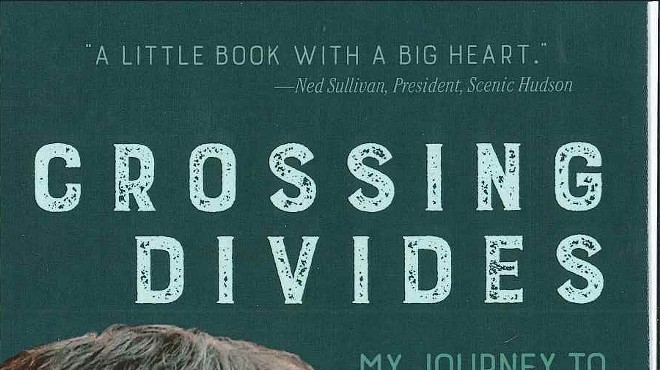Pagans in Dorset, England are distressed at marketing efforts for the Simpsons movie. A giant underwear-clad Homer Simpson waving a doughnut has been painted next to the 180-foot Cerne Abbas Giant, a centuries-old landmark believed to represent ancient spirituality and bring fertility. "It is very disrespectful," Ann Bryn-Evans of the Pagan Federation says. "Are they going to use the countryside as a giant billboard?" The painting, done by artist Peter Stuart, was done with biodegradable paint and will wash away with the rain, but Bryn-Evans claims, "it's been raining buckets and the thing's still there."
Source: BBC News
In mid-July, Italian Transport Minister Alessandro Bianchi called the rate of traffic accidents, injury, and death on Italian roads a “national emergency” and is pushing for tougher penalties and arrests. Rome, which ranks second in the world for highest concentration of car ownership, touts 2.4 million cars for 2.5 million residents—but has one of the worst driving records in Europe. Rome’s rate of pedestrian injury or death is 8.47 people per 1,000, compared to other European cities like London and Paris, that have less than 1 death per 1,000 pedestrians. Danger exists for motorist and passenger as well; statistics show that only one in five Italians wears a seatbelt, including children, who often ride without a car seat or on the lap of the driver. A bill has been submitted to the Senate which would raise vehicular manslaughter to a murder charge for drunk drivers and limit the speeds of young drivers. The issue has also received attention from the Vatican, which released its Guidelines for Pastoral Care of the Road, more commonly known as the “Ten Commandments” of driving, in June. The commandments include orders to protect vulnerable parties, to avoid using a car as an expression of power, and not to kill.
Source: The New York Times, UK Times Online
Research is showing a strong link between a population’s exposure to lead and the crime rate, with violent crime spiking two decades following a peak in lead poisoning. After studying nine countries and accounting for different modes of policing, economic status, abortion rates, and demographics, economist Rick Nevin believes that 65 to 90 percent of crime rate variations can be explained by lead exposure. Other evidence shows that lead is a neurotoxin causing impulsive behavior and aggression. This pattern, and the earlier phasing out of lead, may help explain the dramatic 67 percent drop in homicide and 57 percent decrease in overall crime during Rudy Giuliani’s term as mayor of New York City; two studies by criminologists Richard Rosenfeld and Steven F. Messner say only 10 to 20 percent of the change is due to his zero-tolerance policing tactics.
Source: The Washington Post
Brandon L. Garrett, a law professor at the University of Virginia, has conducted a study that examines 200 cases in which wrongly-accused prisoners were exonerated due to DNA evidence. Garrett’s study shows that 79 percent of cases involved errors in identification by eyewitnesses, 55 percent used faulty forensic evidence, and 18 percent included testimony by informants who were the actual perpetrators. The average sentence length for the exonerated was 12 years, and 14 of the absolved inmates were on death row. Peter Neufeld, founder of the Innocence Project, a group which helped generate a number of the exonerations, says that DNA testing is available in less than 10 percent of violent crimes. Garrett’s study suggests that there could be thousands of innocent people serving sentences with no hope of DNA evidence helping to prove their innocence.
Source: The New York Times
A program designed to balance a shortage of doctors in the rural US by offering special visas to foreign physicians is being hampered by restrictions caused by terrorism and the immigration debate. The program grants J-1 visas to foreign doctors who work in underserved regions for three to five years and promises an expedited path to permanent residency in return. Since 9/11, the federal government has increased legal fees, made tests more difficult, and the Department of Health and Human Services has changed the rules that designate an area as “underserved,” affecting their ability to acquire J-1 physicians. The restrictions are expected to be tightened even more in the wake of the attempted terrorist attacks in Britain that were linked to foreign doctors. According to government calculations, it would currently take 16,000 medical practitioners to meet the needs of 35 million underserved Americans, and that need is estimated to grow to 24,000 by 2020.
Source: The Philadelphia Inquirer
Reports filed by the House and Senate party committees for fund raising through June 30 state that the Democrats are leading in donations by vast amounts. So far the 2008 Democratic campaigns for White House, Congress, and other party committees has raised $388.8 million, while Republican donations lagged behind with $287.3 million. The contrast is also clear in numbers for the presidential race, in which eight Democratic candidates raised $179.3 million and nine Republicans collected just $118 million. A portion of the Democrats’ advantage is their demographic’s utilization of the Internet, while Republicans tend to be drawn toward more traditional forms of media like talk radio. Top Republican fundraiser Mitt Romney raised $10 million online in six months, while Democratic candidate Barack Obama raised $10.3 million for the latest quarter alone.
Source: The Wall Street Journal and BBC
Thousands of pounds of ice obtained by the federal government for hurricane Katrina relief are being melted after racking up $12.5 million in storage costs. According to FEMA contracts, the ice was supposed to be disposed of three months after purchase, but is now nearly two years old. The Army Corps of Engineers admitted that it ordered too much ice after giving flawed estimates, and FEMA decided to transport the ice thousands of miles and store the excess for the 2006 hurricane season.
Source: USA Today
NBC Universal Inc. is being sued for $105 million in litigation filed on July 23 by Patricia Conradt, sister of Bill Conradt, a suspected sexual predator. Conradt committed suicide after he became a subject of the “Dateline NBC” series, “To Catch a Predator.” In the series, staff members of the Perverted Justice activist group pose as underage boys or girls in online chat rooms, inviting men to meet them at a house where police and a television crew are staked out. Once they arrive, they are confronted by the host of the show, Chris Hansen, and then arrested by police. Conradt, a former district attorney, had failed to show up at the rigged house, so police and cameramen proceeded to his home. The suit says the crew “trespassed and invaded upon Bill’s property” to “broadcast a spectacle to millions.” The Murphy, Texas stakeout was plagued by other blunders as well—the district attorney was unable to prosecute the two dozen men that were arrested, saying many cases were marred by the involvement of amateurs, and the city manager was fired for arranging the filming without notifying the mayor or city council.
Source: The Los Angeles Times
Researchers have found that drinking just one can of soda a day, whether regular or diet, is linked with a 48 percent increased risk of metabolic syndrome. Metabolic syndrome symptoms include excessive abdominal fat along with high blood pressure, blood-glucose levels, and blood triglycerides. These accompany low levels of the healthy cholesterol high-density lipoprotein. Having three or more of these symptoms puts a person at twice the normal risk for diabetes and heart disease. Soda makers claimed the results “defy the existing body of scientific evidence, as well as common sense.” The study, which was published in the journal of the American Heart Association, also reported a 31 percent greater risk of obesity and a 30 percent greater risk of a larger waist line for those drinking one regular or diet soda per day.
Source: The Los Angeles Times
On July 24, an appeals court rejected a Bush administration rule supported by the American Trucking Association and Federal Motor Carrier Safety Administration, an agency that works to prevent crashes, injuries, and deaths associated with large trucks and buses. The rule increased the maximum hours a trucker could work within a seven or eight day period, from 60 to 77 hours within seven days and from 70 to 88 hours over eight days. The court ruled against the changes citing the FMCSA had ignored data from a self-commissioned study that found a significantly higher risk of accidents caused by fatigue during those extra work hours. About 100 people die in accidents involving trucks each week, helping to make trucking the most dangerous industry in the country.
Source: The New York Times

















